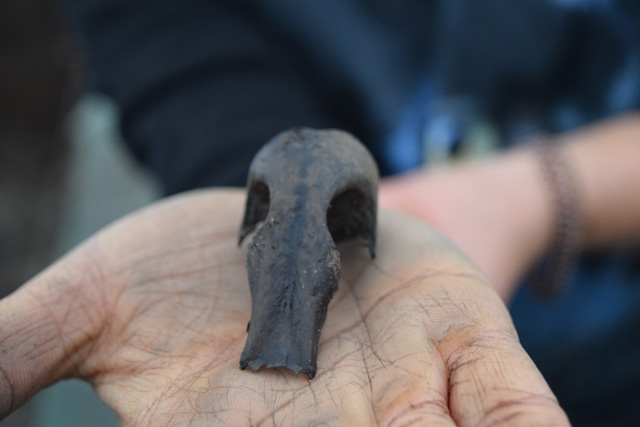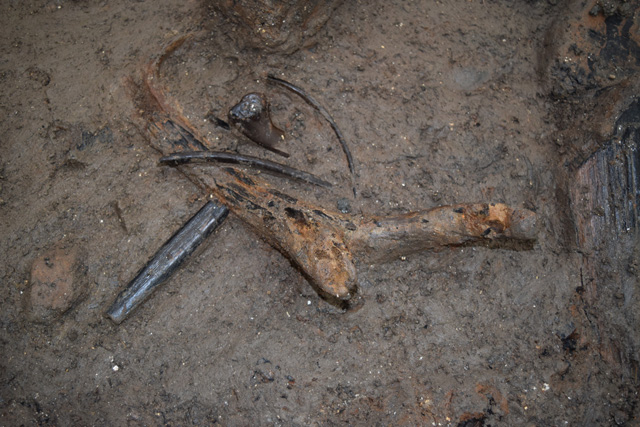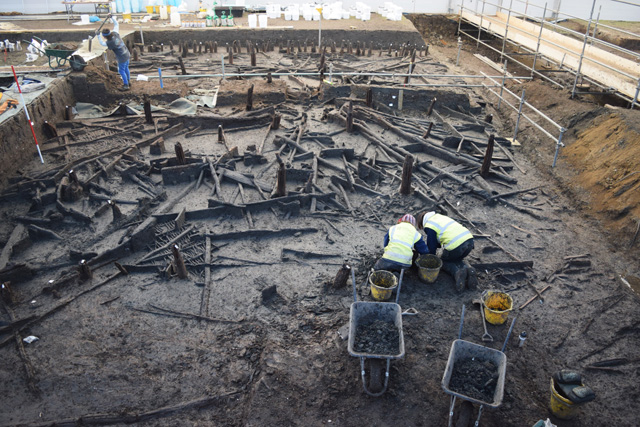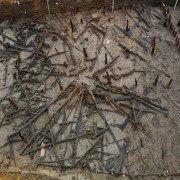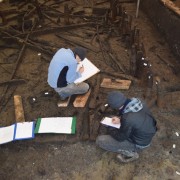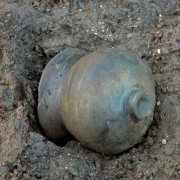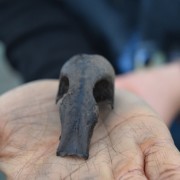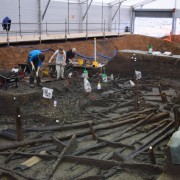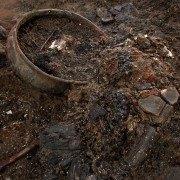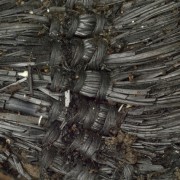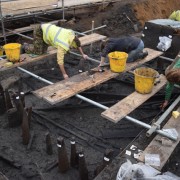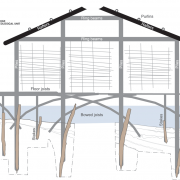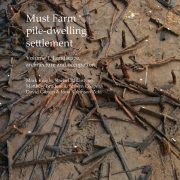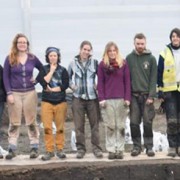Dig Diary 9: The Site and its Environment
December 14, 2015
The Fenland Environment
Over the last few weeks we have described how important it is to consider the site in relation to others in the surrounding area, alongside difficulties in ritual and functional interpretations. Another important facet of the excavation is to look at the environment the settlement was part of. This is an interesting prospect, requiring a number of techniques, which is critical to building an idea of later Bronze Age life in the Fens.
The Fens during the Bronze Age were in a state of flux as the environment began to change. Rising sea levels meant that previously dry areas became wet, creating new areas of saltwater and pushing the freshwater rivers further inland. However, this process was fluid and these areas of wet and dry moved back and forth periodically. For the people in this landscape during the Bronze Age this posed a challenge. Did they decide to move back and forth following this wet-dry, marine-freshwater change or settle in one location?
Historically there have been a number of assumptions made about the lifestyles of those living in the Fens in the past. Many of these focus on the use of rich, natural resources present there such as fish (perch, pike and eels) and waterfowl. Additionally, it has been thought that people would have made extensive use of reeds and other plants for thatch and other domestic uses. In these models there is little consideration for the continued use of dryland (terrestrial) resources, such as domestic animals or plant species. However, our current excavations are challenging this perspective. We have large amounts of terrestrial animal and plant remains and very little signs of the presumed “fish and fowl” diet.
The settlement we are currently excavating is strongly suggestive of a more “fixed” lifestyle, making it highly likely that the people who lived there were not chasing the fluctuating wet-dry edge of the Fens. Instead, they consciously chose an extremely watery location on which to build their dwelling: over a river channel. The river sediments above and below the occupation layers in the channel are full of aquatic remains: fish, water birds and mammals such as otters. However, the occupation deposit itself is dominated by terrestrial animals: pig, cow, sheep, horse, dog and deer bone with aquatic remains forming a very small percentage. Equally, plant remains are mainly dryland species: oak, ash, barley and wheat with comparatively little evidence of aquatic plants being utilised.
On the basis of this evidence, the people from the site were living in the watery landscape of the Fens but barely using the natural resources it offered. Instead they were continuing to exploit the dry lands. These dry areas were further away but where they had domesticated animals and would have hunted deer. Why weren’t people using the Fens’ natural resources to any significant degree? More importantly, if people were still using the dry land so heavily why were they choosing to live in the Fens at all?
The “fish and fowl” presumption, largely based on medieval accounts, is primarily an economic one: people would have been exploiting the resources around them. It is an idea familiar from today and seems logical to us, yet the evidence we have simply doesn’t fit the model. The people from the later Bronze Age would likely have viewed the landscape and its resources in a very different way to us. So, if the reason for living in the Fens wasn’t about resources, what was it about?
The Fens during this period are a series of “islands” of high ground fragmented by water. These areas of water, in particular rivers, are veins through this marshy landscape that are immensely important. These waterways would have acted as important transportation and trade routes for people and goods to move through this landscape. Building a settlement over one of these channels could well have been tied to these routes.
It is possible that having a dwelling on the waterway could have had a social function. While the site may have appeared isolated geographically, people using the rivers for movement would have been coming into contact with it regularly. It is also a possibility that control of these waterways would have been important. If people could have some control over the movement of resources, in particular bronze, then they would certainly have held some form of social power.
These are all big questions and ones which are unlikely to be answered by our site alone. Scale is always an essential element when examining any archaeological investigation, whether that is the scale of the individual site or the region it lies in. The fact that the Must Farm settlement is helping us to contribute to these debates is so exciting for us. We still have a lot to excavate but at this stage of the project we are already challenging the existing tropes of later Bronze Age life in Fenland.
Related stories
Dig Diary 12: Discovering Our First House
January 11, 2016
Dig Diary 11: The Importance of the Wood Record
January 4, 2016
Dig Diary 10: Looking Further Afield
December 21, 2015
Dig Diary 9: The Site and its Environment
December 14, 2015
Dig Diary 8: Understanding the Site
December 7, 2015
Dig Diary 7: What is the Timber Platform?
November 30, 2015
Dig Diary 6: Textiles
November 23, 2015
Dig Diary 5: Revealing the Remains of the Fire
November 16, 2015
Learn more
About
The Must Farm pile-dwelling settlement was excavated by the Cambridge Archaeological Unit with funding from Historic England and Forterra.Publications
Read the Open Access publications the Must Farm pile-dwelling settlement: Volume 1. Landscape, architecture and occupation and Volume 2. Specialist reports.Post-Ex Diaries
Our work on-site has finished but lots more investigation is taking place as we study both the material and the evidence we recovered. ...read more
Discoveries
See some of the discoveries from the Must Farm pile-dwelling settlement.
Making Must Farm
Find out about our work with AncientCraft recreating Must Farm’s material.
FAQs
Further information on the Must Farm project.

